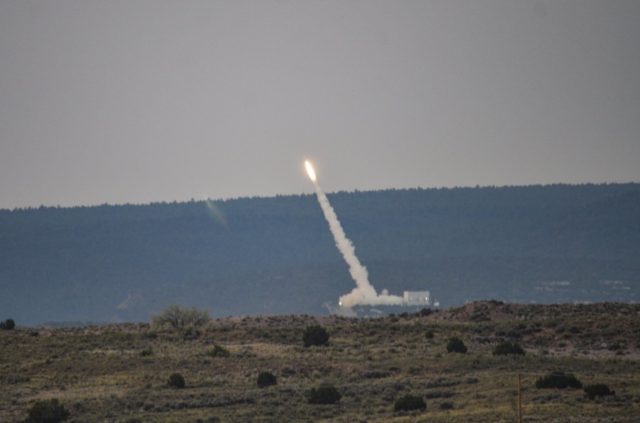The US Army’s Integrated Air and Missile Defense Battle Command System (IBCS) has been cleared for low rate initial production (LRIP) following the Milestone C decision for the program, Northrop Grumman has announced.
The Milestone C decision for the missile defense system, which authorizes entry into LRIP, follows two successful limited user tests last summer during which the systems coordinated the intercept of a high-performance, high-speed tactical ballistic missile target and a cruise missile target.
“The decision by our senior leaders to transition IBCS from development into initial production reflects their confidence in the maturity of the system and its readiness for operational testing to inform initial operational capability,” said Maj. Gen. Rob Rasch, Army Program Executive Officer, Missiles and Space.
“The soldiers of the 3-43 Air Defense Artillery Battalion performed tremendously in training and testing over the last year, and are poised to demonstrate the game-changing capabilities of IBCS next fall during the initial operational test & evaluation.”
To achieve Milestone C, Northrop Grumman worked in partnership with the US Army’s Integrated Fires Mission Command Program Office in the system engineering, design, development and testing of IBCS hardware and software.
IBCS creates a paradigm shift for integrated air and missile defense (IAMD) by replacing legacy stove-piped systems with a next-generation, net-centric approach to better address the evolving complex threat. The system integrates disparate radars and weapons to construct a far more effective IAMD enterprise.
The system delivers a single integrated air picture and broadens surveillance and protection areas. With its open systems architecture, IBCS allows incorporation of current and future sensors and effectors and interoperability with joint C2 and the ballistic missile defense system.



























